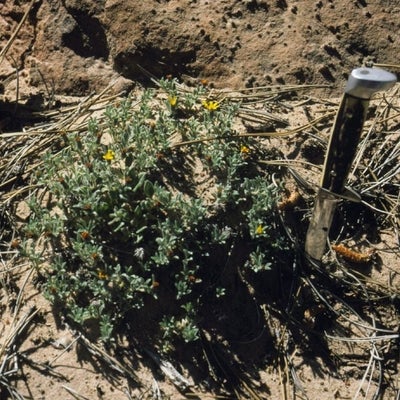Jones' Goldenaster
Heterotheca jonesii (S.F. Blake) S.L. Welsh & N.D. Atwood is rare species found only in southern Utah. It forms dwarf cushions often partially buried in sand. Robust shoots are similar in general appearance to H. villosa var. depressa, which is stipitate-glandular and occurs in northwestern Wyoming. H. jonesii frequently occurs sympatrically with H. villosa var. scabra, a glandular, green-leaved and more robust taxon that is unlikely to be confused with it. It is found in bare sandy or gravelly soils, sand pockets in rock crevices of cliffs, exposed Navajo and Kaiparowits sandstone formations, pine-juniper scrub and ponderosa pine woods; 1200–2800 m. It is of conservation concern.
Last revised 21 April 2025 by J.C. Semple
© 2025 J.C. Semple, including all photographs unless otherwise indicated
1-4. Heterotheca jonesii, Garfield Co., Utah. 1. Large plant. 2. Rootstock. 3. Flowering shoots. 5. Head.







